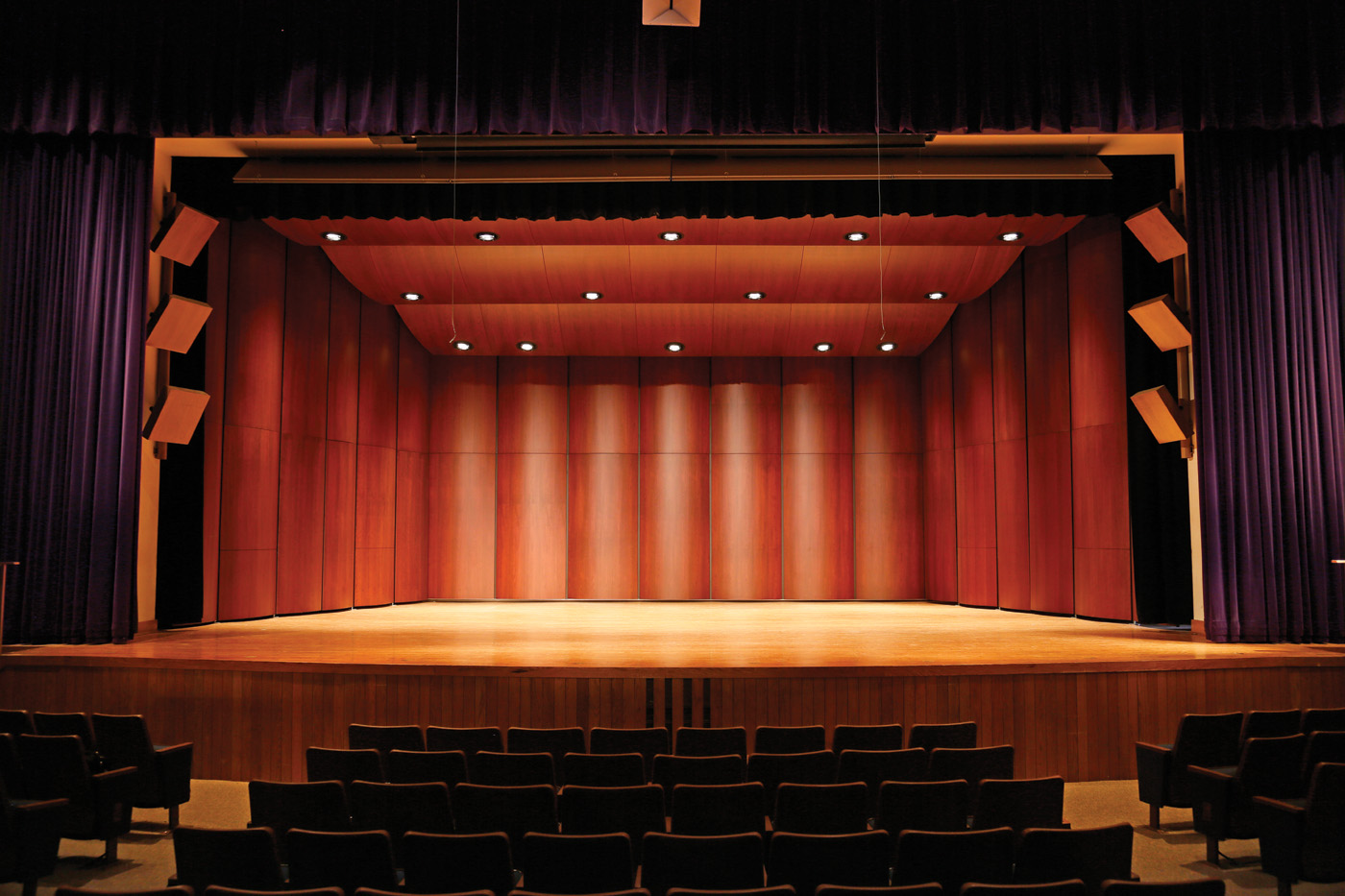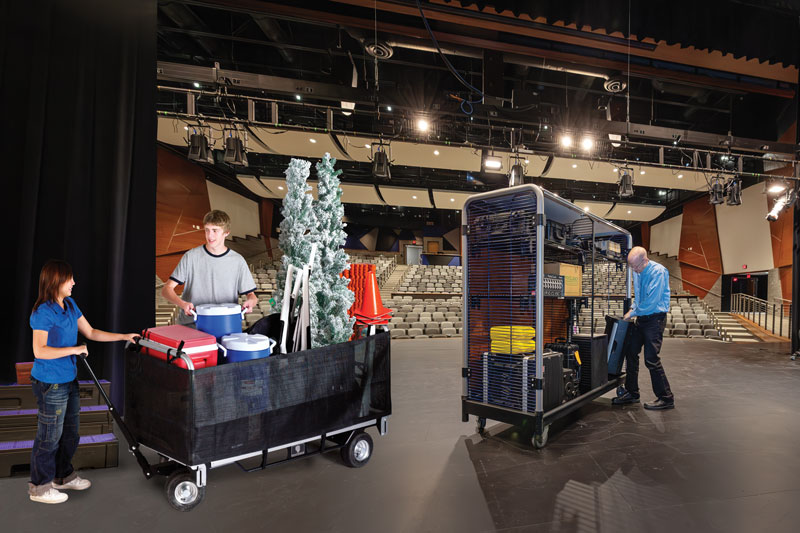For an audience, attending a symphony concert blends auditory and visual stimuli. From the lobby’s décor to the performers’ attire, the entire experience engages the senses. The hall’s interior design also has a strong impact, which is a primary reason the acoustical shell deserves so much attention. When done well, an acoustical shell unites the stagehouse and audience chamber – both acoustically and visually.
To accomplish this visual unification, possible shell finishes include painting (from standard to ornamental), laminate or wood veneer. With a wood veneer finish, its simple and natural look belies a complexity that blends both art and science.
A Wooden Fingerprint. Wood veneer is comprised of a log that is cut into halves or quartered. Each of these log sections is known as a flitch. Thin layers of veneer are then cut from the flitch; each thin layer of veneer is referred to as a veneer leaf. Based on the slicing process and wood grain pattern, a leaf features distinctive visual characteristics, akin to a fingerprint.
For a veneered piece of furniture, such as a desk or cupboard, it’s relatively easy to match the veneer leaves because they were likely cut from the same single log. By contrast, an acoustical shell’s towers and ceiling panels may encompass more than 4,000 square feet of surface area, with veneer made of leaves cut from many different logs, with each leaf ranging in width from 4” to 8” on average. Coordinating those leaves is like assembling a giant jigsaw puzzle, with the goal of making the end result look as uniform as possible.
Which Flitch is Which? The flitch-selection process is where the art begins. Input from the architect guides the process, based on what species of wood veneer is desired, its cutting technique and how it will be laid up on 4’ x 8’ medium-density fiberboard (MDF) plywood panels. Each flitch is sorted based on its natural characteristics – grain patterns and color. For a shell comprising 4,000 square feet of surface area, that equates to 125 4’ x 8’ sheets! It’s not uncommon for the architect to visit the lumber mill and personally approve the flitches before they are laid up on MDF plywood panels.
The Eyes Know. Compare the visual look of two veneers above – high grade (left) and lumberyard grade (right) – and it’s easy to see the difference on just one 4’ x 8’ panel. These variations become magnified on a large acoustical shell comprised of numerous panels, where a lumberyard-grade veneer creates a discordant and distracting pattern, sometimes like a checkerboard.
Most architects consider acoustical shells to be large-scale furniture. Attention to detail with a high-grade veneer ensures that the architect’s artistic vision will be fully realized. The overall objective is to create a consistent look that complements the hall’s interior architecture and maximizes harmony for the audience.












